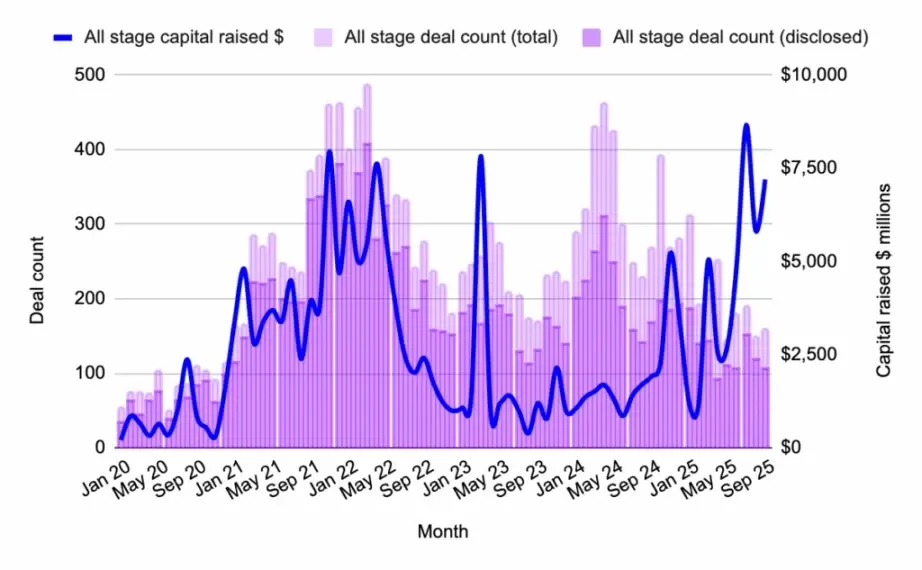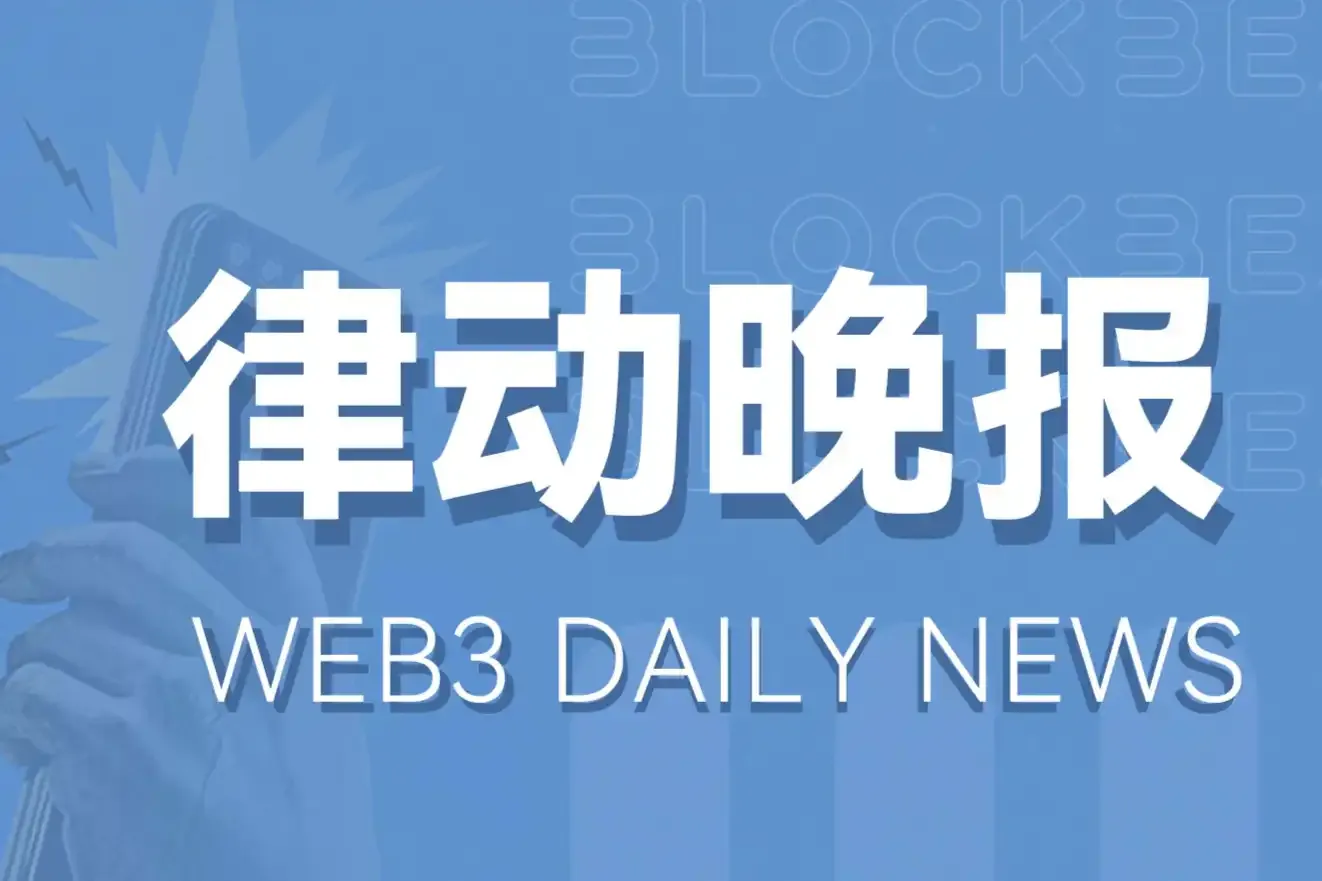A team without an official website, community, or public identity has captured nearly half of the trading volume on Jupiter within 90 days.
To gain a deeper understanding of this mysterious project, we first need to delve into an on-chain trading revolution quietly unfolding on Solana.
The total trading volume processed by HumidiFi accounts for 42% of Jupiter's trading volume. Source: Dune, @ilemi
How Self-Operated AMMs Restructure On-Chain Trading
In the context of AMMs, toxic order flow refers to high-frequency arbitrageurs who leverage low-latency connections and advanced algorithms to quickly capture price discrepancies and rapidly smooth out the price differences between on-chain and centralized exchanges (such as Binance). The profits taken by this toxic order flow are ultimately borne by traders, liquidity providers, and on-chain market makers.
In traditional financial markets using centralized limit order books (CLOB), professional market makers can respond to toxic order flow in various ways (such as adjusting spreads or pausing quotes). They can analyze order flow patterns to identify traders with informational advantages and adjust their quotes accordingly to reduce losses from "adverse selection." Consequently, market makers operating on Solana naturally chose DEXs like Phoenix that utilize CLOB. However, during the "meme frenzy" period from 2024 to early 2025, the Solana network was overwhelmed by unprecedented demand, causing market makers' orders to frequently fail to submit on-chain, while updating quotes required a significant amount of expensive computational units, leading to soaring costs for market makers.
A series of challenging practical issues are forcing a group of the most experienced AMM market makers to fundamentally rethink how on-chain markets operate, giving rise to a revolutionary new market structure.
This new paradigm is known as "Self-Operated AMM" (Prop AMM), aiming to provide lower spreads and more efficient liquidity on-chain while minimizing the risk of being exploited by high-frequency arbitrageurs.
SolFi, ZeroFi, and Obric are the initial "big three" self-operated AMMs. They do not publicly disclose contract interfaces but instead provide them directly to major trading routers like Jupiter, requiring Jupiter to route orders to their AMMs. This design makes it extremely difficult for external professional arbitrageurs like Wintermute to interact natively with the contracts, as they cannot understand or predict the trading logic, thus preventing market maker quotes from being displaced and mitigating the "adverse selection" problem from those with informational advantages.
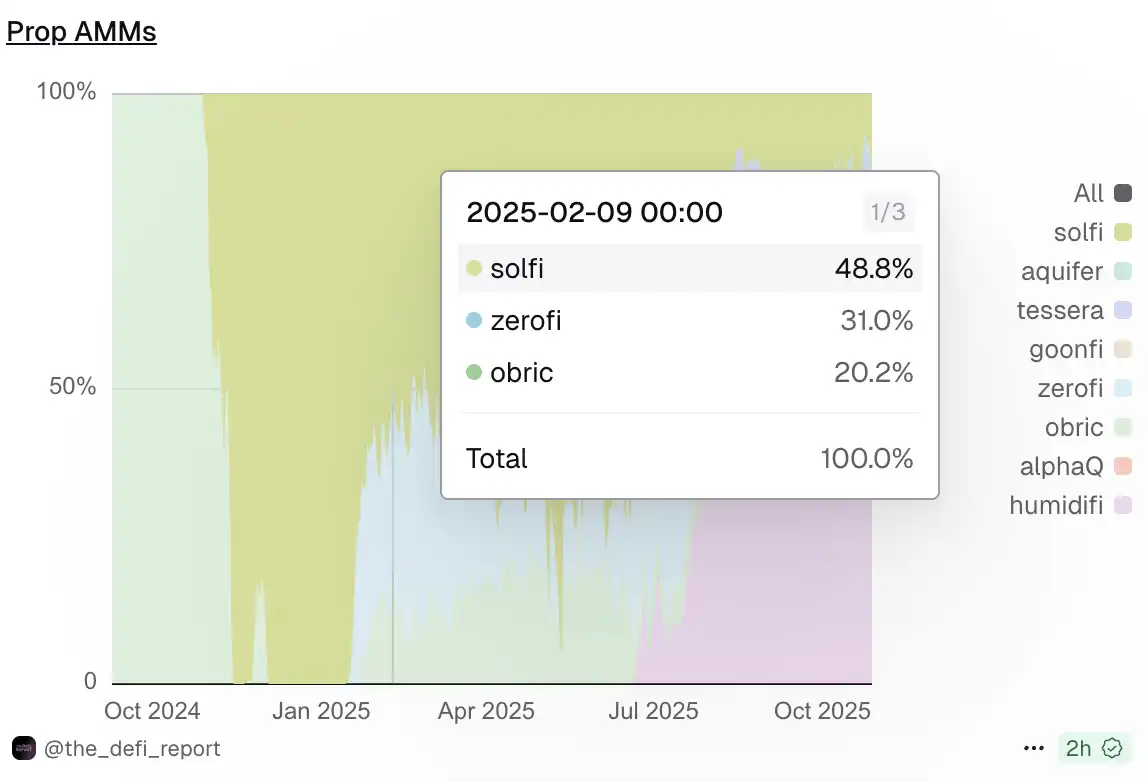
In February 2025, SolFi, ZeroFi, and Obric were the three main self-operated AMMs. Source: Dune @thedefireport
HumidiFi's Blitzkrieg
The competition among self-operated AMMs heated up by July 2025, and a project named HumidiFi rapidly rewrote the entire market landscape.
HumidiFi officially launched in mid-June 2025, and just two months later, it had captured 47.1% of all self-operated AMM trading volume, becoming the undisputed market leader. In contrast, the former dominant player SolFi saw its market share plummet from 61.8% two months prior to just 9.2%.
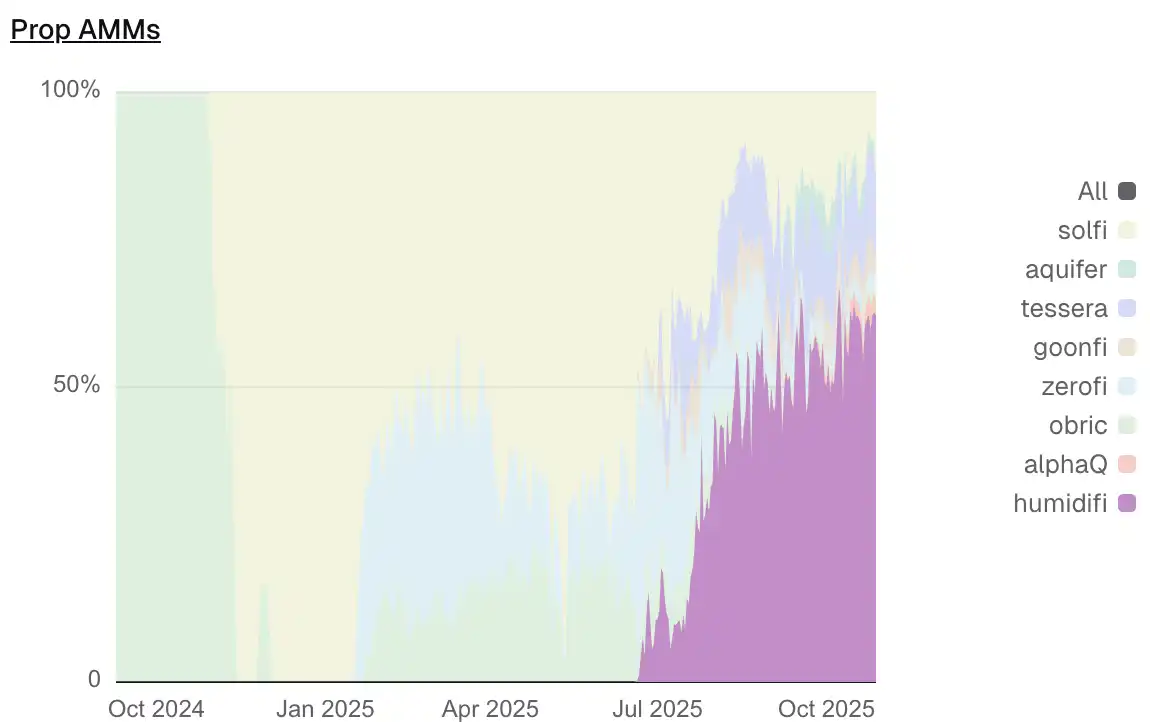
Source: Dune @thedefireport
HumidiFi's dominance is particularly evident in the SOL/USDC trading pair. On October 28, HumidiFi processed $1.08 billion in SOL/USDC trades in a single day, accounting for 64.3% of the total volume for that trading pair.
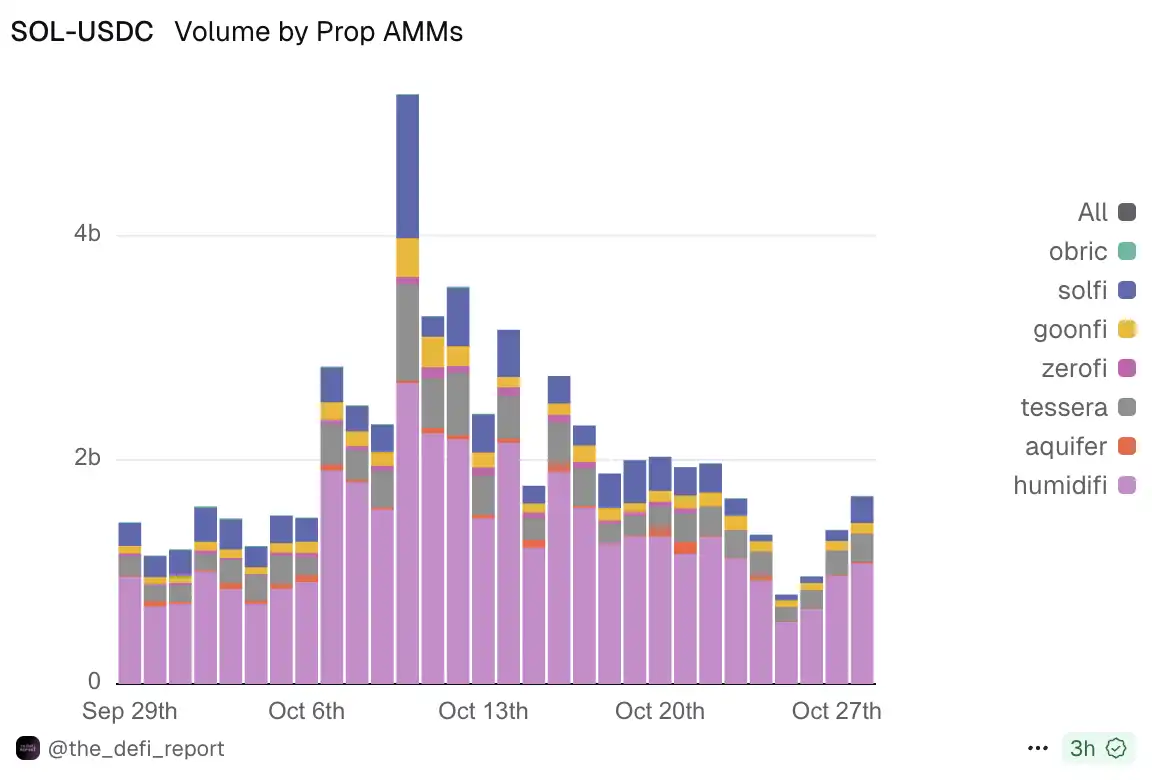
Source: Dune @thedefireport
HumidiFi also has a high penetration rate in Jupiter routing. As an aggregator holding 86.4% market share on Solana, Jupiter's routing choices largely determine the actual experience for traders. Data from October 20 shows that HumidiFi's market share in Jupiter reached 46.8%, more than four times that of the second-place TesseraV (10.7%).
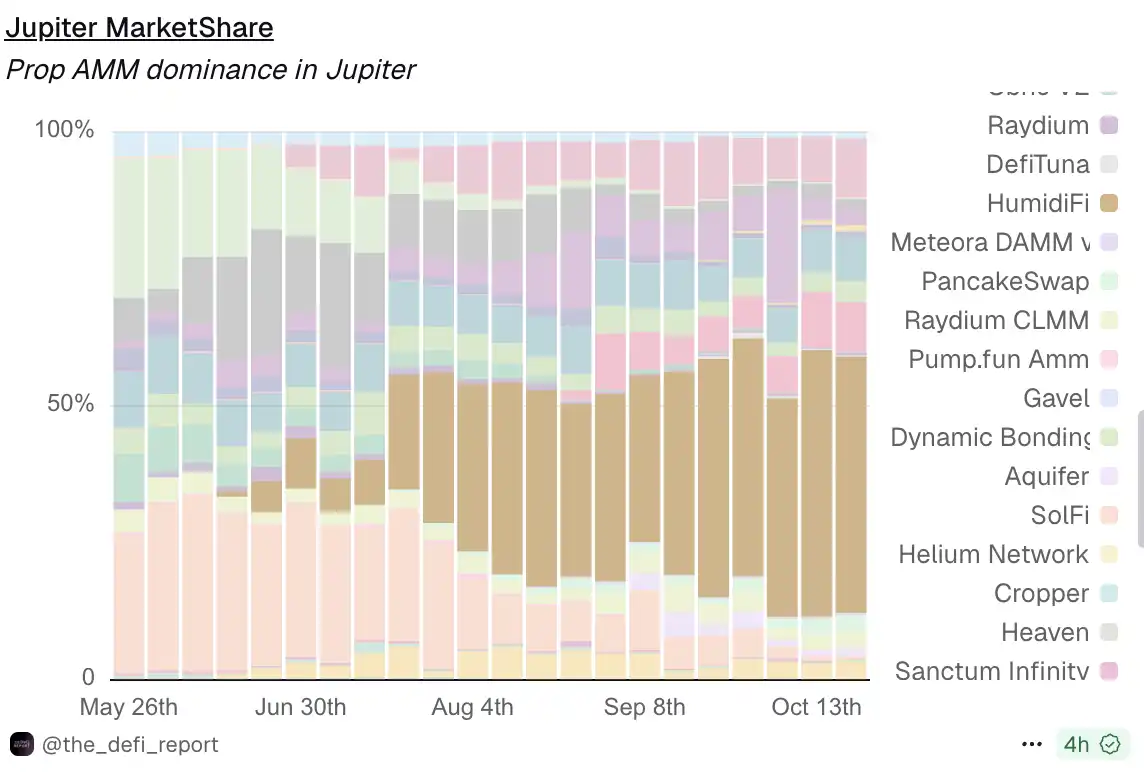
Source: Dune @thedefireport
Expanding the view to the entire self-operated AMM ecosystem, HumidiFi's dominance remains solid. On October 28, the total trading volume of all self-operated AMMs reached $2.18 billion, with HumidiFi alone accounting for $1.35 billion, a staggering 61.9%. This figure not only far exceeds the second-place SolFi's $309 million but also surpasses the total trading volume of all competitors ranked 2-8 combined.

Source: Dune @thedefireport
HumidiFi's victory was achieved almost entirely "under the radar." It has no official website, no early Twitter account, and no information about team members has been made public.
HumidiFi does not need marketing, does not need airdrops, and does not need storytelling. It only needs to provide better spreads and better execution prices in every trade. When Jupiter's routing algorithm repeatedly chooses HumidiFi, the market has cast its vote in its own way.
The Race to the Limits of Speed and Cost
The key to HumidiFi's success lies in its extreme compression of the computational costs for oracle updates and its clever conversion of this technical advantage into absolute market dominance through the Jito auction mechanism.
First, HumidiFi has low consumption of computational resources. According to data provided by @bqbrady, each oracle update by HumidiFi consumes only 799 CUs (computational units). In contrast, its main competitor SolFi requires 4,339 CUs. TesseraV, operated by top market maker Wintermute, also requires 1,595 CUs, which is twice that of HumidiFi.

Source: X, @bqbrady
HumidiFi also fully leverages its low CU consumption advantage to gain absolute trading priority in Solana's MEV infrastructure Jito auctions. In Jito auctions, trading priority is determined not by absolute tips but by tips per computational unit. HumidiFi pays approximately 4,998 lamports in tips for each oracle update. Due to its extremely low CU consumption (799 CUs), its Tip per CU ratio reaches an astonishing 6.25 lamports/CU.

According to data provided by Brennan Watt, an engineer from Solana's core development team Anza, HumidiFi uses six times fewer CUs than the former leading Prop AMM SolFi and pays more than eight times the tips.
Another key advantage for HumidiFi is the frequency of oracle updates. HumidiFi updates its oracle at a rate of 17 times per second, far exceeding its main competitors (SolFi at 13 times, TesseraV at 11 times, and ZeroFi at 10 times).
In the volatile cryptocurrency market, this near real-time price tracking capability allows it to consistently lock in around fair value, avoiding leaving opportunities for arbitrageurs while not needing to widen spreads for self-protection, thus providing tighter liquidity.
Additionally, HumidiFi excels in cost control. HumidiFi's daily operating cost is only $2,247. In contrast, although SolFi manages five times the assets under management (AUM) of HumidiFi ($8 billion vs. $1.6 billion), its daily cost is only 20% lower than that of HumidiFi ($1,785).
WET Token Launches on Jupiter DTF
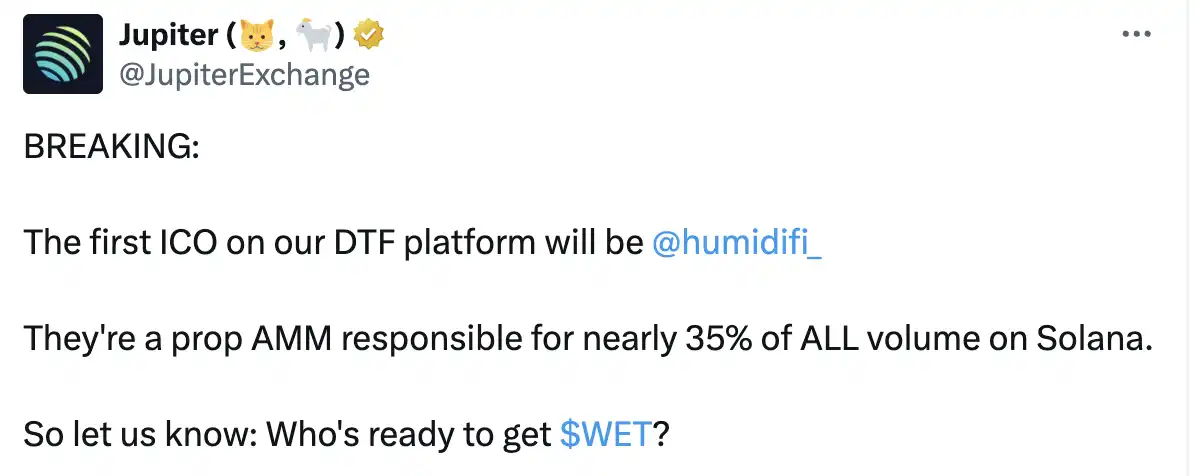
During the community call on the evening of October 30, the Jupiter team announced the first launch project of their ICO platform DTF: HumidiFi, with the token symbol WET.
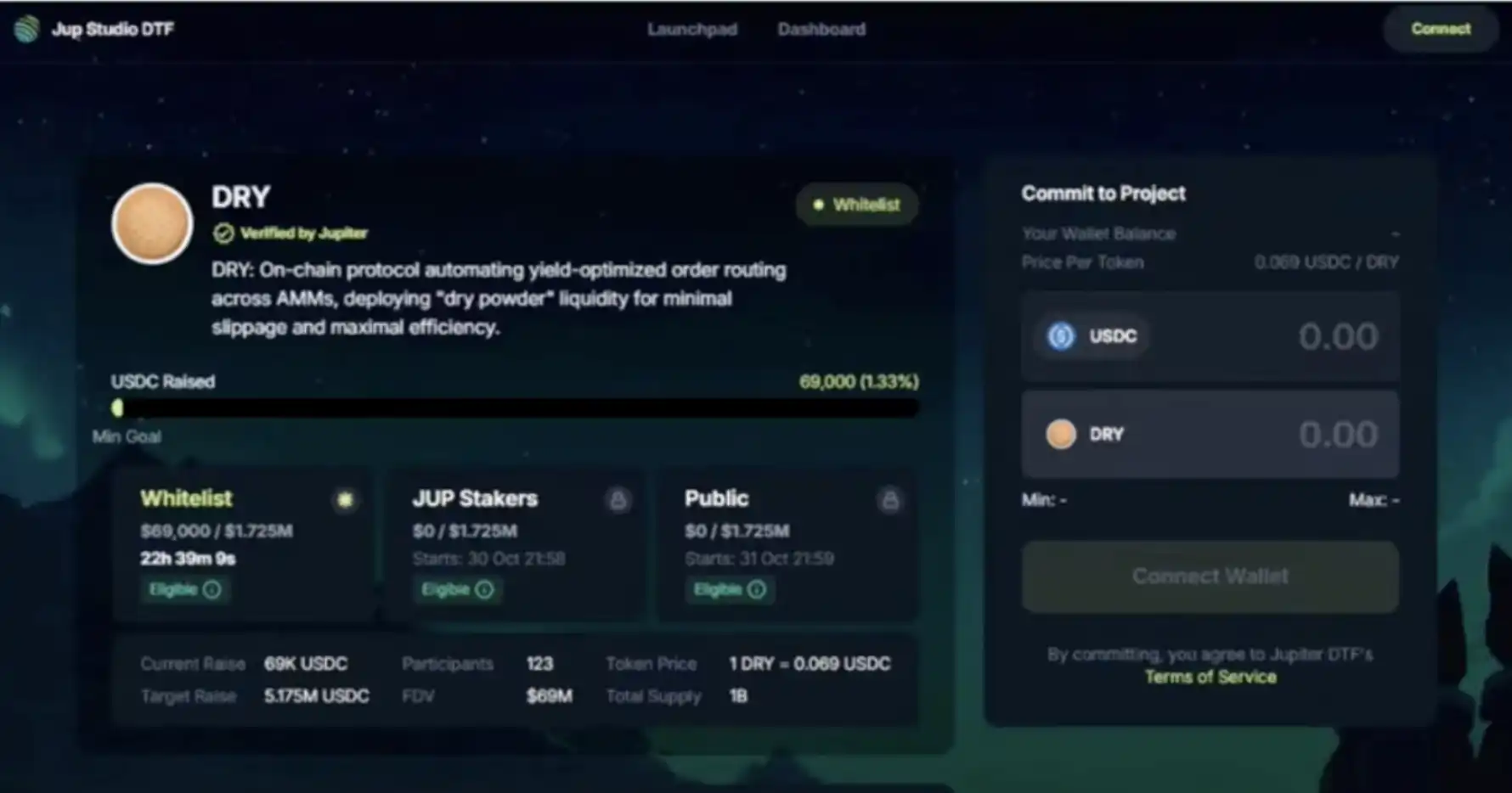
According to the disclosed demo webpage, the token sale is divided into three parts:
Whitelist (acquisition rules yet to be determined) can ensure a portion of the allocation.
JUP stakers can receive guaranteed allocations based on their staking amounts.
Public allocations will be on a first-come, first-served (FCFS) basis, and once filled, will immediately open for on-chain circulation without a lock-up waiting period.

Notably, the HumidiFi team has explicitly stated on Twitter that "there are no VC allocations," which is particularly rare in the current market environment filled with VC pre-sales and low liquidity with high FDV.
Self-operated AMMs are a "winner-takes-all" track, and HumidiFi has achieved its current dominance through technological strength. However, this also means that once new competitors make breakthroughs in CU efficiency or oracle speed, they could quickly erode its market share. This Prop AMM war has clearly just begun.
免责声明:本文章仅代表作者个人观点,不代表本平台的立场和观点。本文章仅供信息分享,不构成对任何人的任何投资建议。用户与作者之间的任何争议,与本平台无关。如网页中刊载的文章或图片涉及侵权,请提供相关的权利证明和身份证明发送邮件到support@aicoin.com,本平台相关工作人员将会进行核查。
